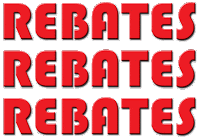Incentives: Purpose, Process, Pay-Off (Guest Blogger, Desirée Grace)
The competition is trying to poach one of your top players.
Another superstar is threatening to leave. Your top two are wrangling over territories and making the John Cena gesture at each other in sales meetings. It’s as bad as the recent NCAA drama. What’s a leader supposed to do? Well, there’s a lot you should be doing.
Enough of the shameless self-promotion, let’s tackle another aspect of leading salespeople to championship performance: Incentives and Bonuses.
Salespeople are coin-operated. Not that other aspects of their
role don’t motivate them, but money really motivates them. So does customer satisfaction, the thrill of the chase, and beating the competition out of an order. However, for now, let’s focus on Sales Incentives and best practices. The primary purpose of the Incentives is to MOTIVATE your sales team. Think of Caitlin Clark as she was going after a national championship. You want RESULTS. Highly motivated teams charge after results. These results can be revenue growth, new customer acquisition, new product launches, cross-selling, or other important initiatives. Some salespeople may view incentives as an entitlement. If that has been a past practice and cultural norm at your organization, now is the opportunity to change that. Your benchwarmers need to contribute, too. As you design your incentives, keep in mind the primary purpose of MOTIVATION. Here are some other best practices for Incentive design that will get your team moving and grooving. Your process should include:
Another superstar is threatening to leave. Your top two are wrangling over territories and making the John Cena gesture at each other in sales meetings. It’s as bad as the recent NCAA drama. What’s a leader supposed to do? Well, there’s a lot you should be doing.
- Ensure your assigned territories make sense. (See my previous blog post.)
- Align your compensation with your strategy and market. (That’s a future blog post.)
- Lead by example and behave professionally. (Hmm, let’s put a pin in that, too.)
role don’t motivate them, but money really motivates them. So does customer satisfaction, the thrill of the chase, and beating the competition out of an order. However, for now, let’s focus on Sales Incentives and best practices. The primary purpose of the Incentives is to MOTIVATE your sales team. Think of Caitlin Clark as she was going after a national championship. You want RESULTS. Highly motivated teams charge after results. These results can be revenue growth, new customer acquisition, new product launches, cross-selling, or other important initiatives. Some salespeople may view incentives as an entitlement. If that has been a past practice and cultural norm at your organization, now is the opportunity to change that. Your benchwarmers need to contribute, too. As you design your incentives, keep in mind the primary purpose of MOTIVATION. Here are some other best practices for Incentive design that will get your team moving and grooving. Your process should include:
- Simplicity and ease of understanding
- SMART goals
- Trackability and transparency
- Communication and timing matter
- Alignment with overall organizational goals
- Fact-check for the unintended consequences
- Any “governors” necessary to prevent bad behavior
Desirée Grace is an advisor, consultant, and mentor with 30+ years as a senior leader in the electrical distribution and manufacturing sectors. She builds brands,
grows revenue and motivates teams, facilitates strategy and execution, and offers special expertise in helping offshore companies enter the North American market. An experienced professional who enables win-win outcomes for organizations and their partners, find her on LinkedIn at www.linkedin.com/in/desireecgrace.





Comments
Whether you are an individual contributor or management, applying SMART AND KISS methods as outlined, truly work to the benefit of individual, organization and customer. I've experienced many "incentive" programs and the successful ones apply exactly what Frank has outlined.
Great post.